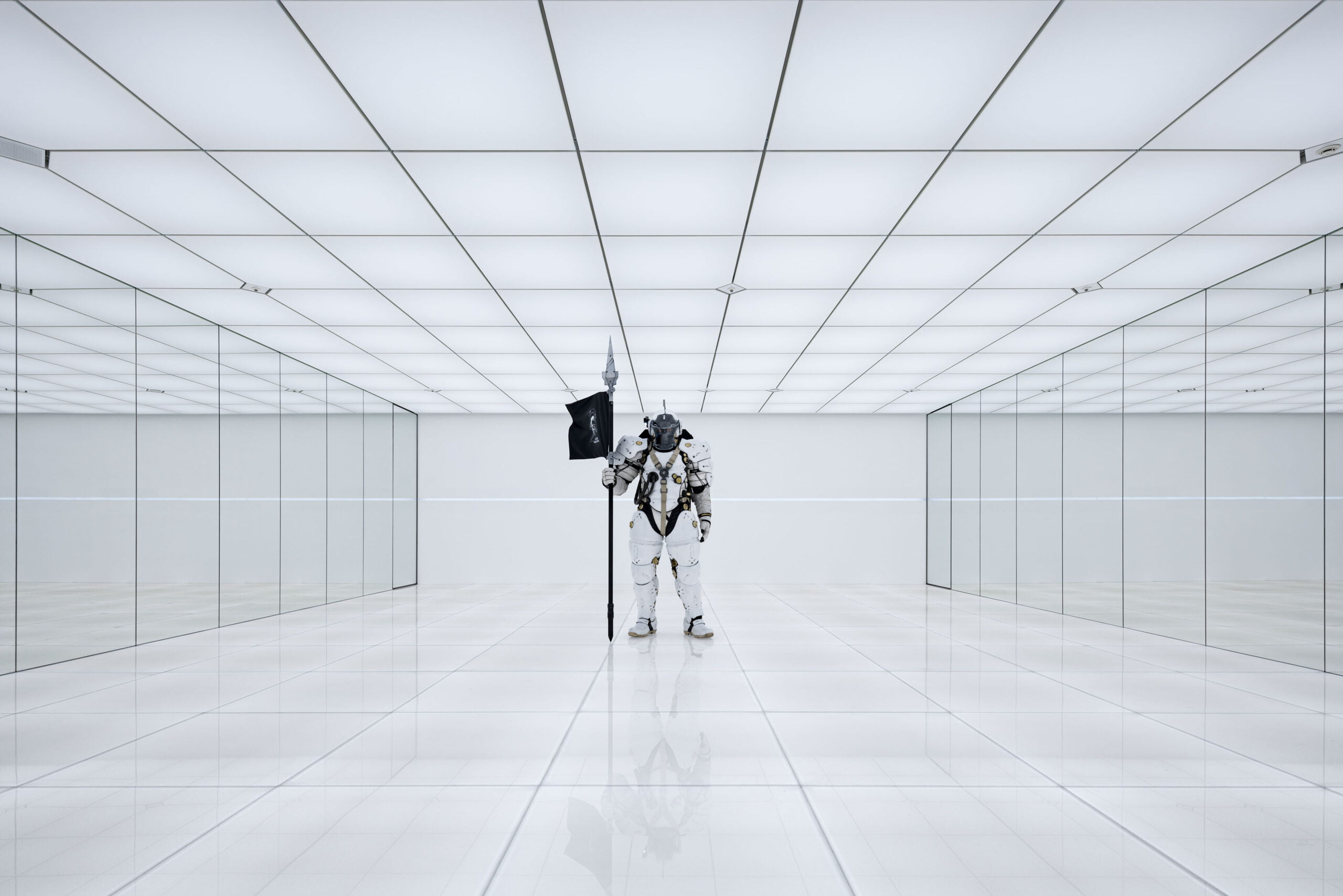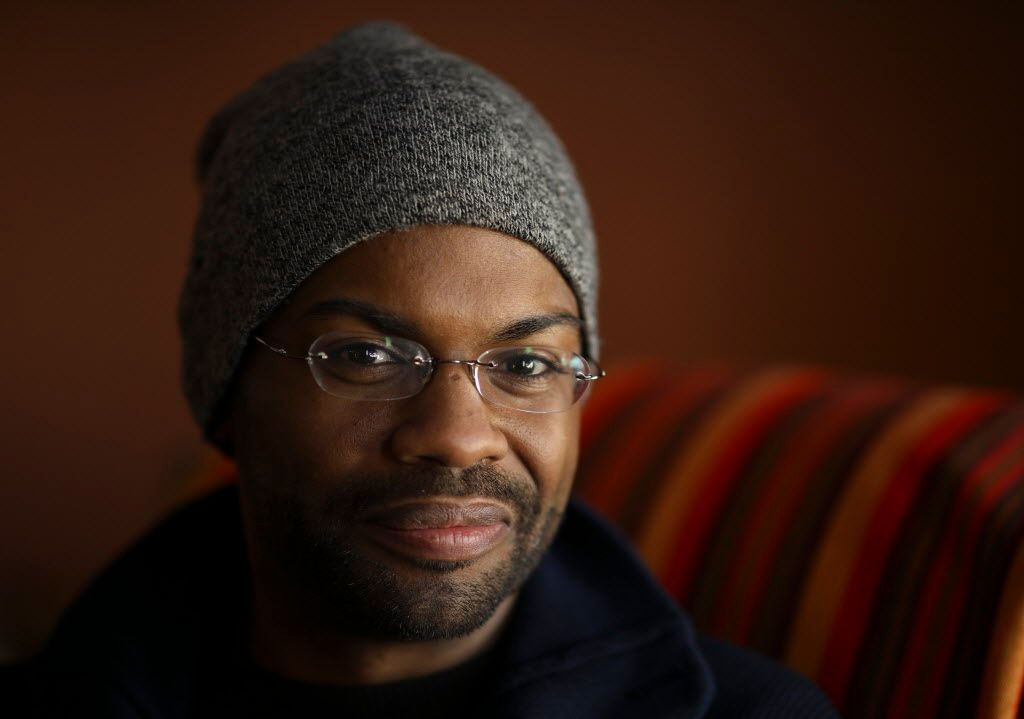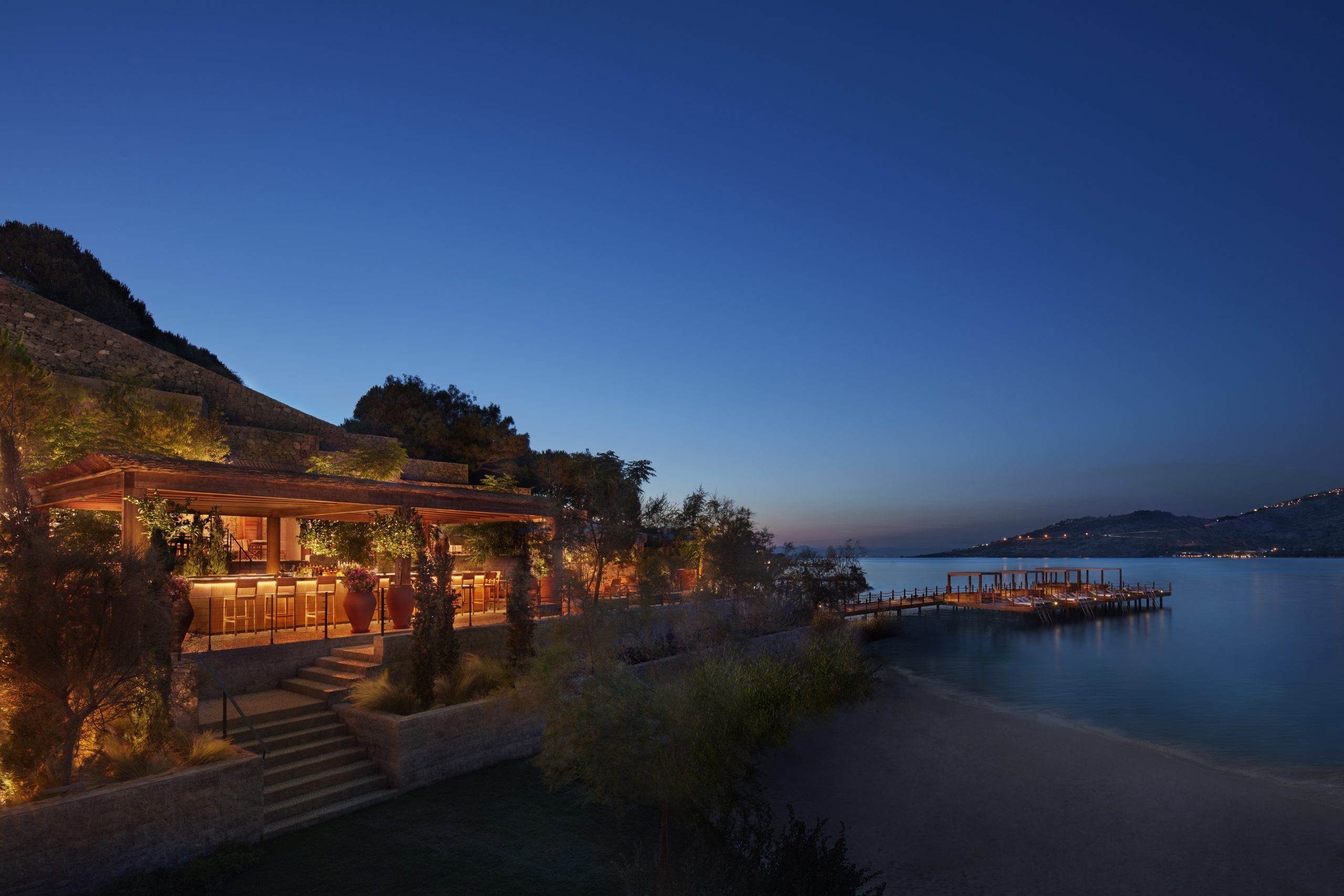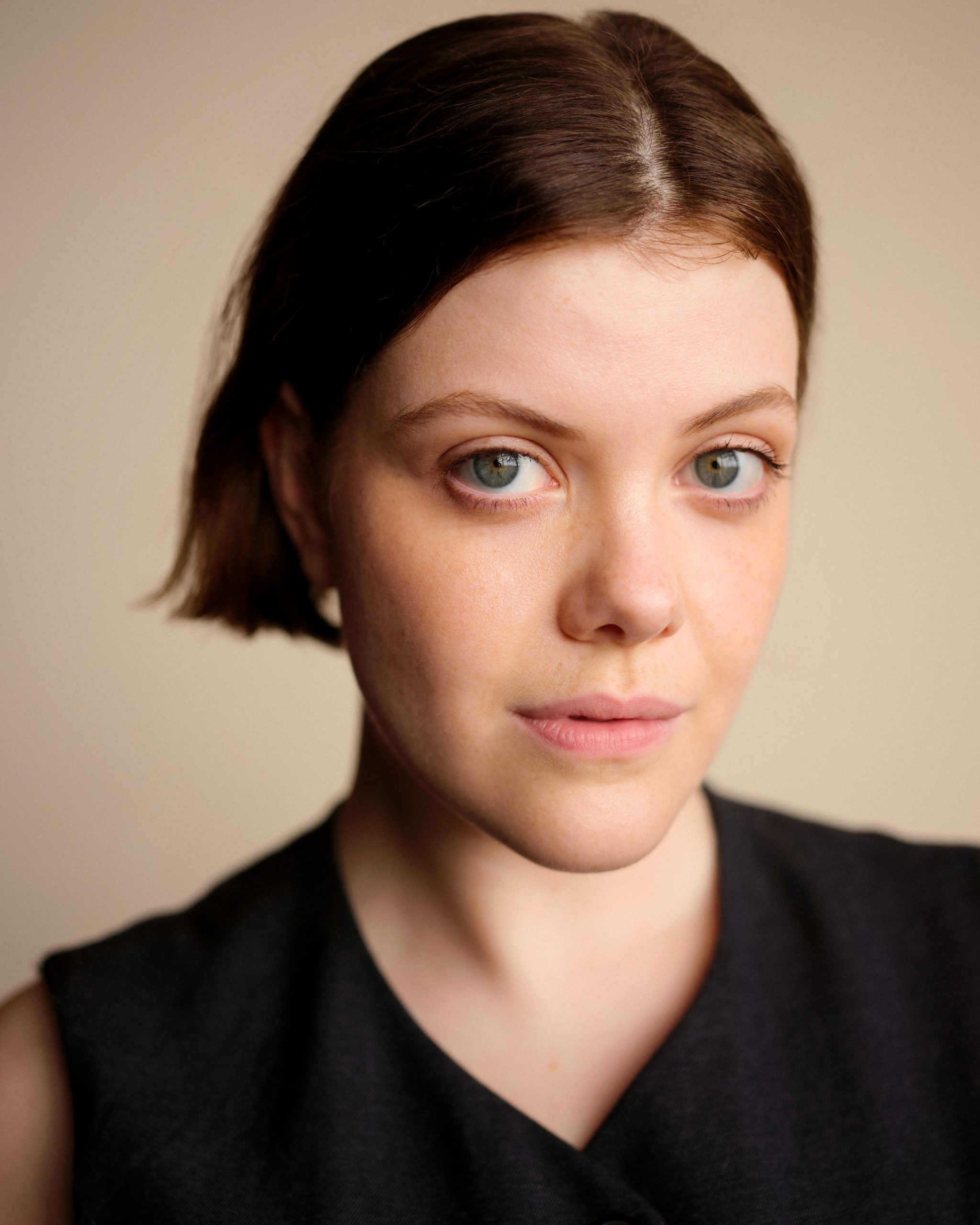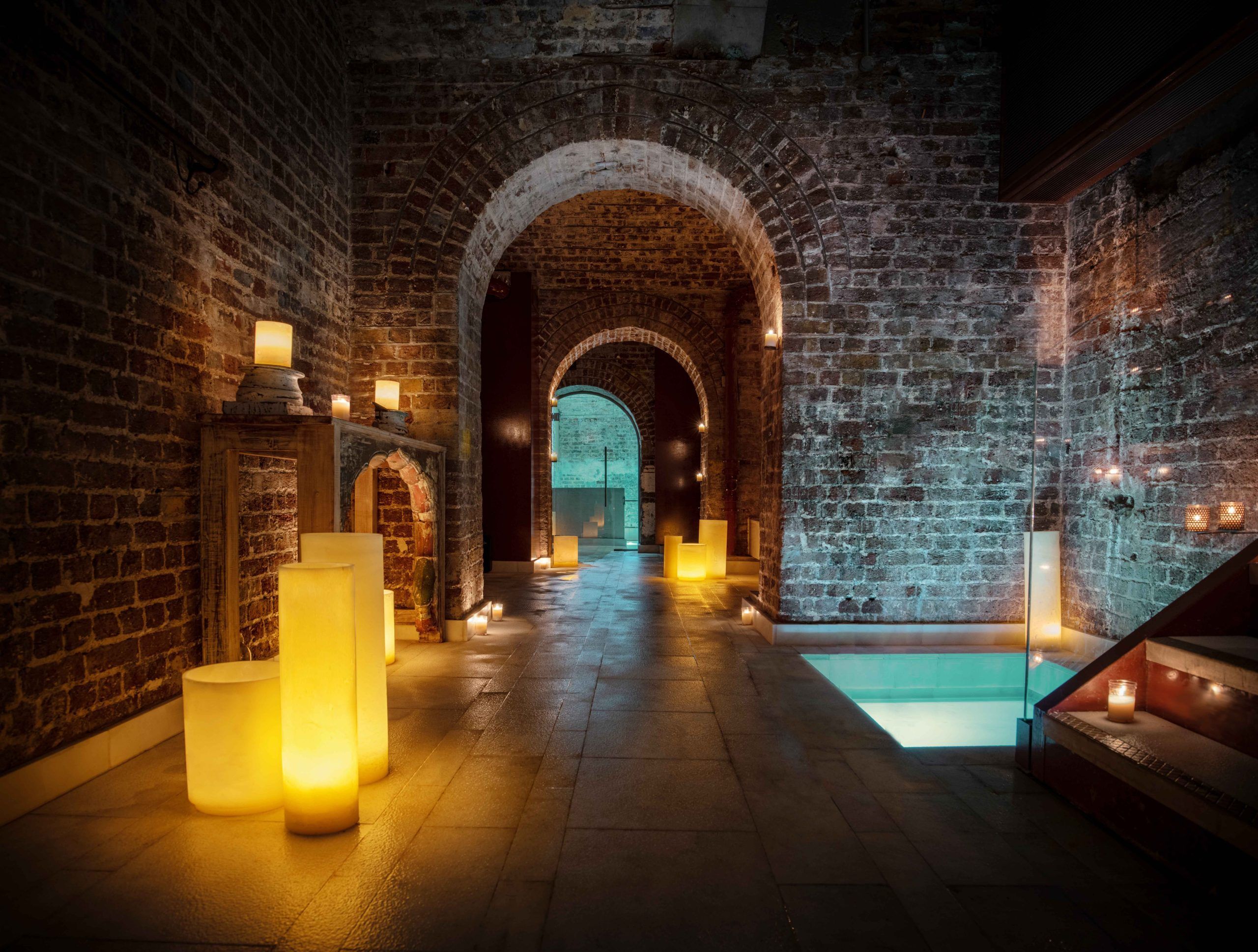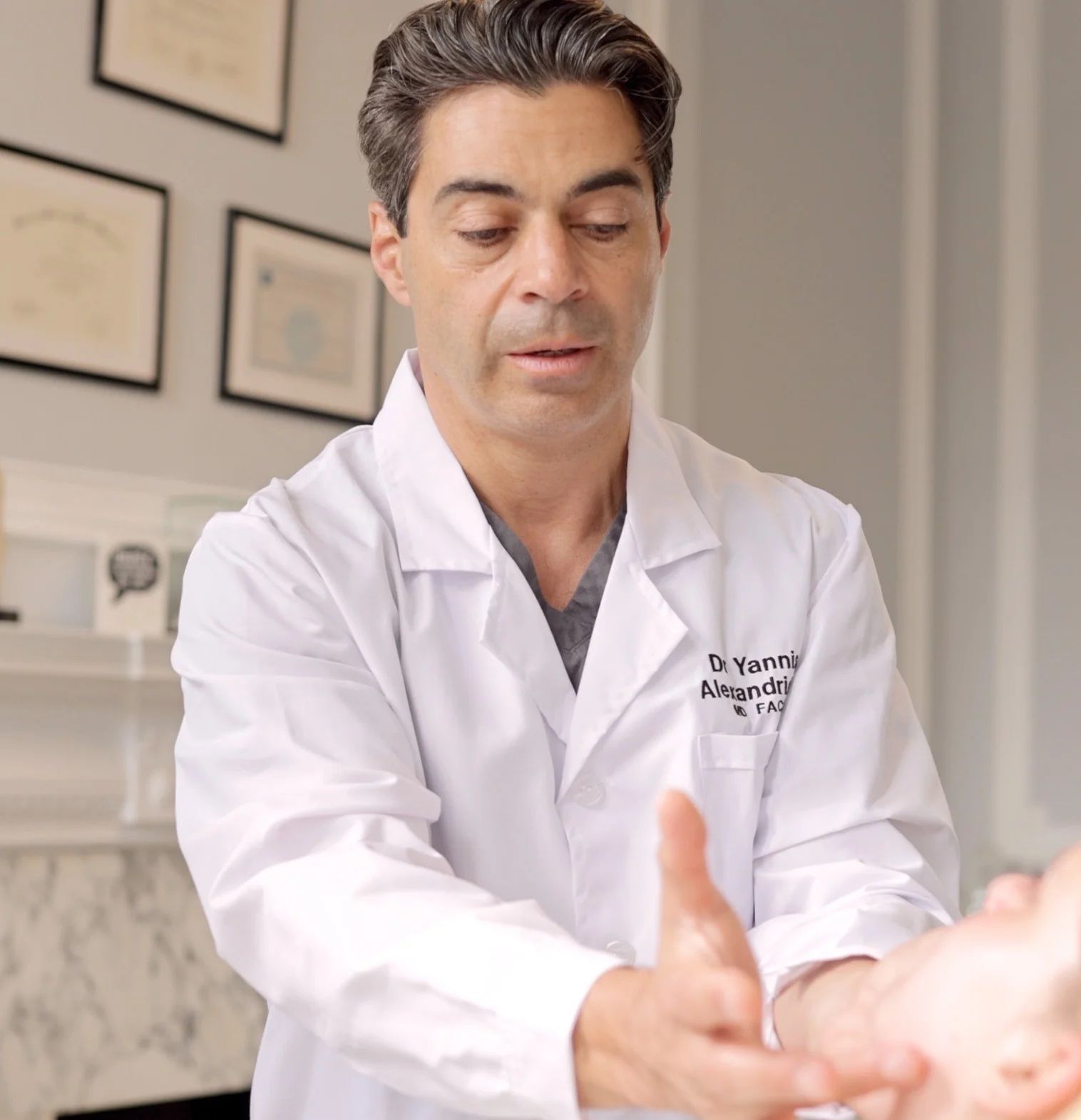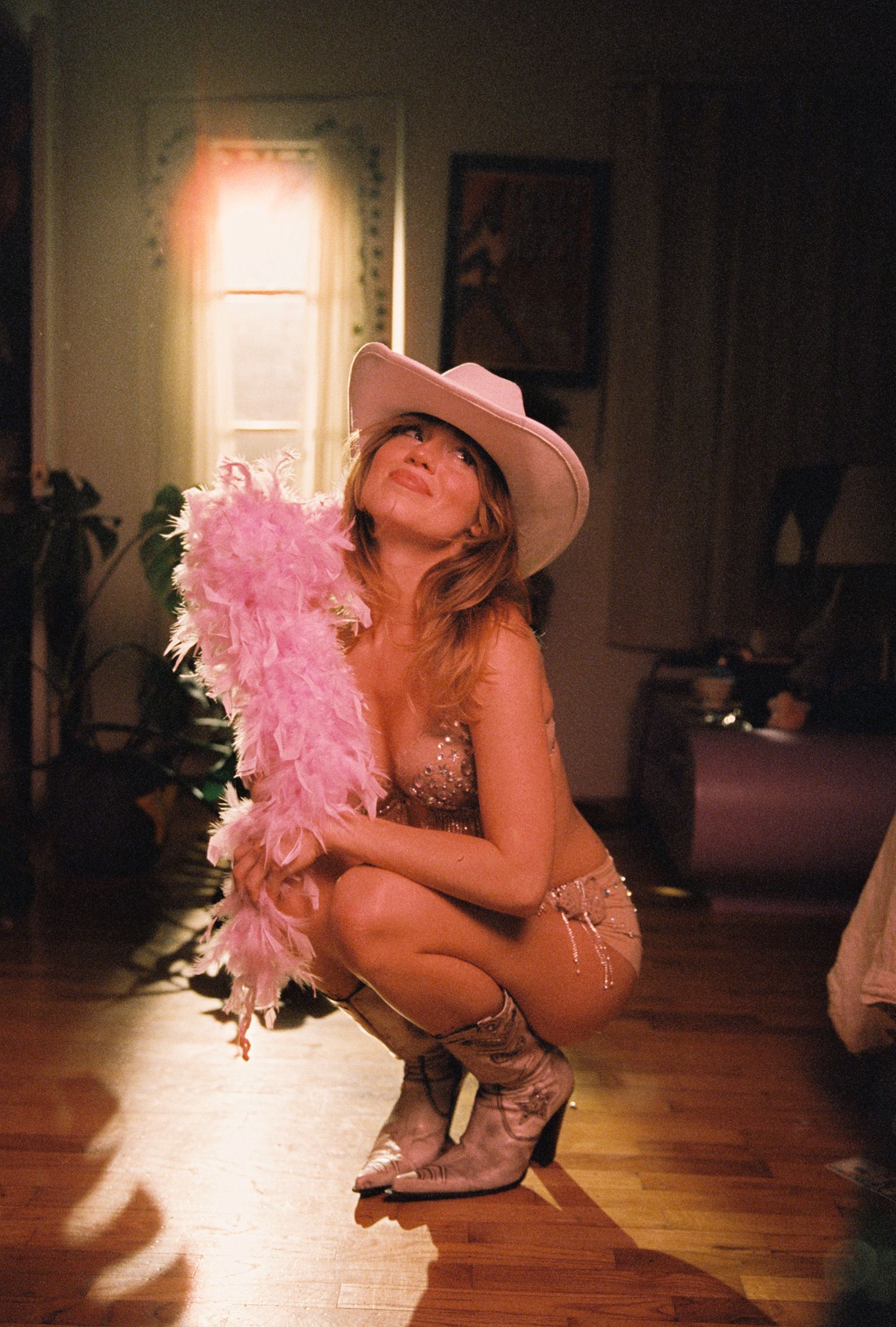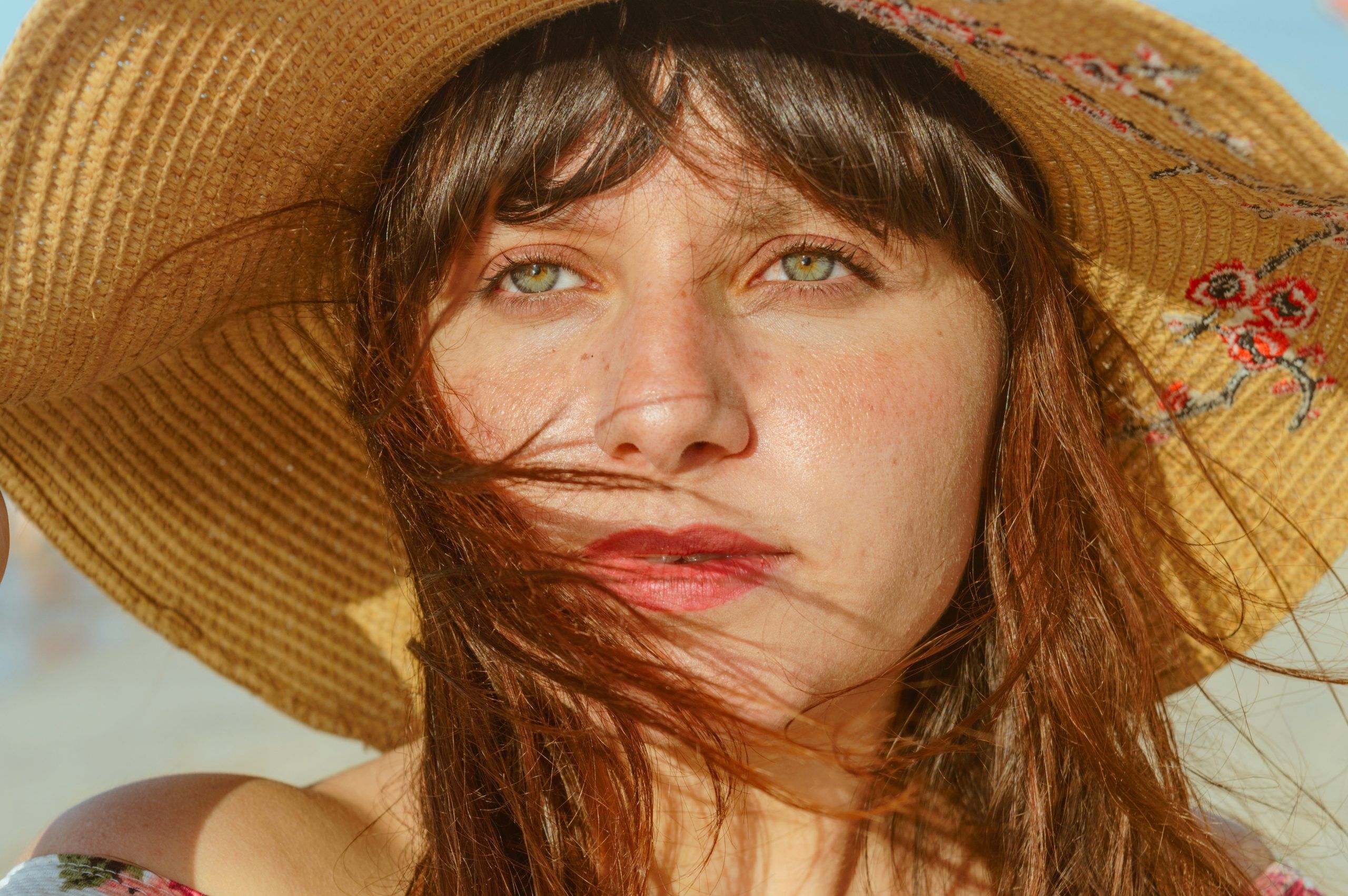Kojima Production’s Tokyo HQ is an inspired sci-fi-esque office space.
Since legendary video game designer, director, producer and writer, Hideo Kojima, announced Kojima Productions as a fully fledged studio in December 2015, it’s been onwards and upwards for Mr Kojima and his team. Yes, Hideo may be widely known for creating the iconic Metal Gear Solid franchise whilst he was at Konami but at Kojima Productions the creative has been able to unleash his forward-thinking ideas tenfold. It’s all started with the video game company’s first official project, Death Stranding, which released on the Playstation 4 in November 2019. Similarly to his previous work, Death Stranding was another inspired project. In Death Stranding you play as the protagonist Sam Porter Bridges (played by renowned actor, Norman Reedus), a courier that is tasked with reconnecting America after a devastating event changed the world’s landscape forever.
That’s the barebones of the game’s story anyway, and it also features Kojima’s signature trademarks. Such as a meticulous attention to even the smallest detail, a star-studded cast, quirky easter eggs, and stunning environments to traverse through. Thanks to the organisation’s exponential growth over the last several years, Kojmia Productions has been able to move from a small office into a far larger and upgraded workspace. Located at the towering Shinagawa Season Terrace building in Minato-ku, Tokyo, the company has now taken over a large office space.
Last month 1883 Magazine’s Cameron Poole was able to gain a sneak peek into the world of Kojima Productions and have an exclusive tour round the office space. So our Senior Writer has shared his thoughts below.
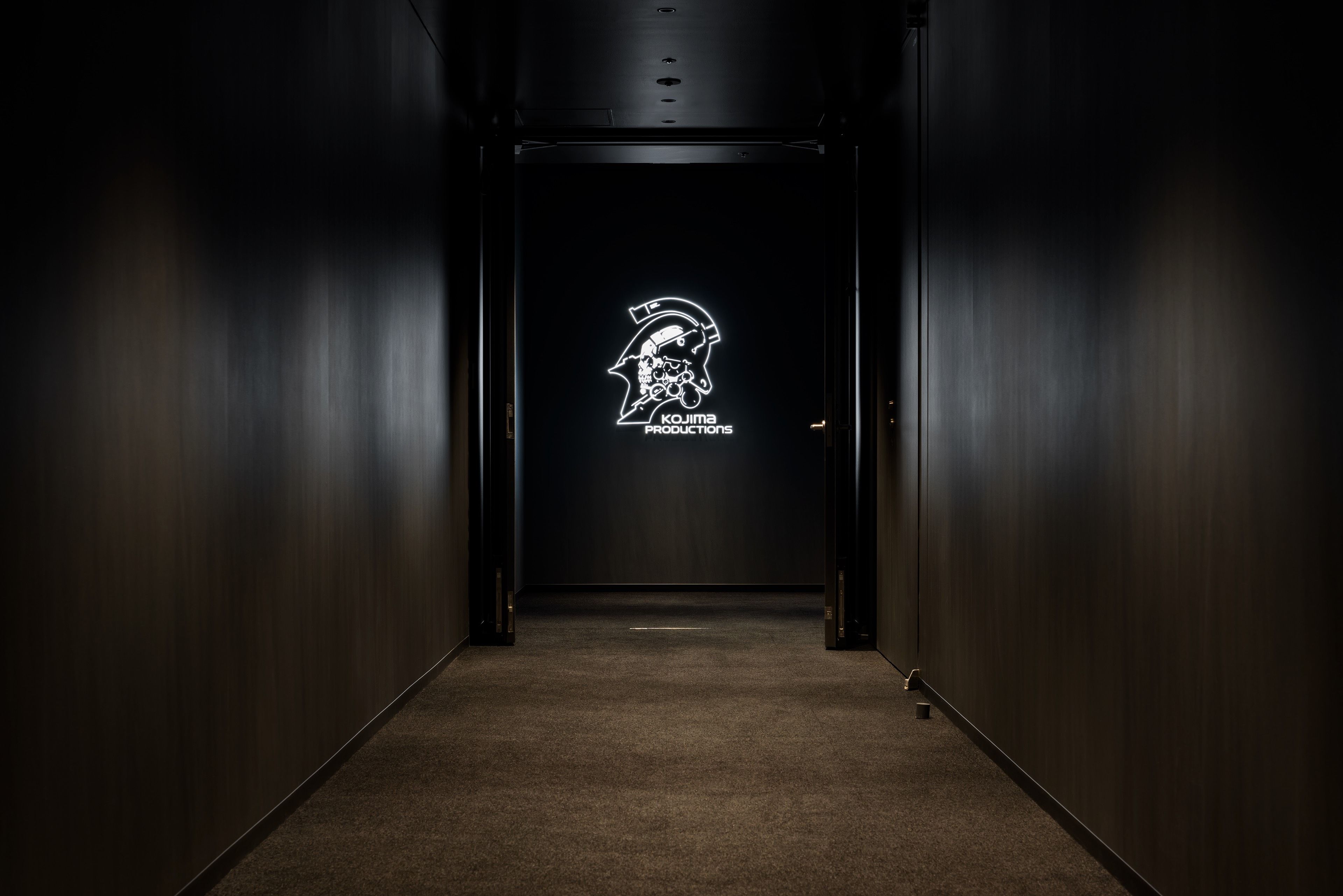
As I arrived at the ground floor lobby at Shinagawa Season Terrace, a multi-business complex, on an intensely humid day in bustling Tokyo, I was stricken with feelings of excitement and nervousness. As a fan of Kojima’s work, I was eagerly anticipating the prospect of being able to venture around the space. But due to the fact that in the video game world what these businesses do behind closed doors is extremely secretive and as Kojima Productions is working on Death Stranding 2, I had no idea if I’d be shown round the office or if it’s literally just going to be one tiny room. Especially because media tours are a rare sight at Kojima Productions given they are busy working on projects. Once I arrived I was greeted by one of Kojima Productions’s courteous and friendly marketing team members, Mao. Although I understandably wasn’t allowed to see the large room where the anticipated next instalment of Death Stranding is being worked on; to my surprise I was able to see and walk through many of the spaces that are used to help bring their games to life and more.
Interestingly as the tour kicked off, I found out that the entire office had been totally redesigned over the course of a year by the architecture company Tanseisha (a business that resides in the same skyscraper) and the sound studio was designed by a company called Sona. The concept of the office’s renovation was to transform the area into something that resembles a spaceship. The end result is a space which feels futuristic and sleek. The first room I was shown is a prime example of this spaceship like design, the official entrance of the display sector, a room nicknamed ‘The Ludens room’. A brightly lit and stunning area with mirrored walls that is home to one thing and one thing only. A full-scale 1/1 statue of Ludens, the official Kojima Productions mascot. It’s the only one in the world and was brought to life by Hideo and Kojima Production’s Art Director, Yoji Shinkawa. The mascot’s design resembles somewhat of an astronaut or space traveller that is ready to embark on a great adventure into the unknown. Functionality wise, this particular room isn’t used much by employees but rather as a way of welcoming special guests to the studio.
Remarkably, a few days after I stood in that exact room, it turns out avant-garde actor Nicholas Cage paid the studio a visit as fans across the world saw via a photo shared on Hideo Kojima’s social media pages. Who knows how Cage will be involved in Kojima Production’s next project. After taking in the atmosphere of the ‘Ludens room’, I was led through a heavy mirrored door, the first door took us into Kojima Productions’ ‘Archive room’. This small purpose-built area is dedicated to displaying special items of interest. As I walked alongside the glass cabinet in the centre of the room, I was seeing first-hand various key items related to Death Stranding. There was pieces of clothing related to the game, original storyboards, scripts, signed items, as well as drawn artwork along one of the black room’s walls. Moving back out across the ‘Ludens room’, we made our way into a VIP meeting room kitted out with an all-white interior. This is a space used for private meetings normally with acting talent or other important guests.

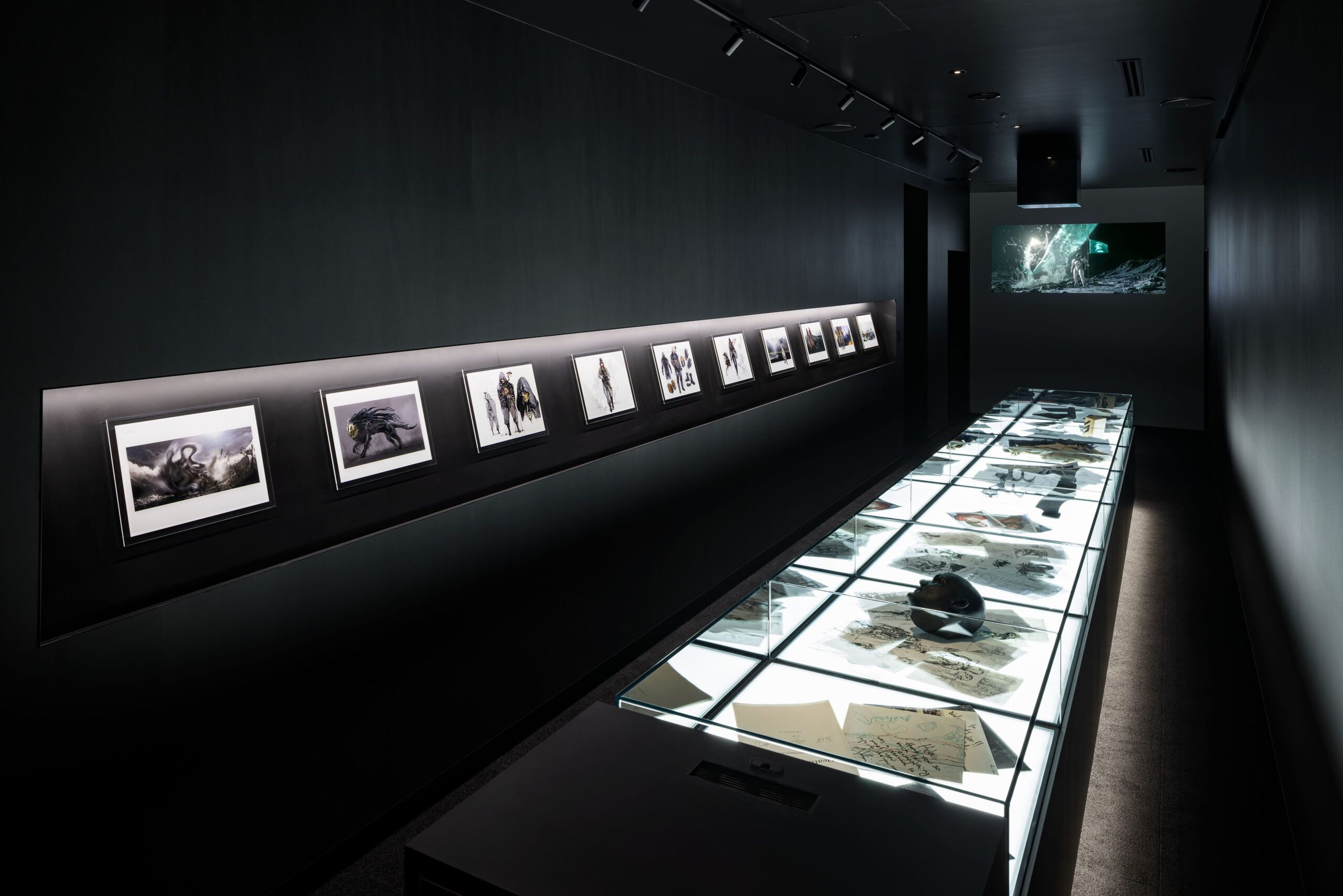
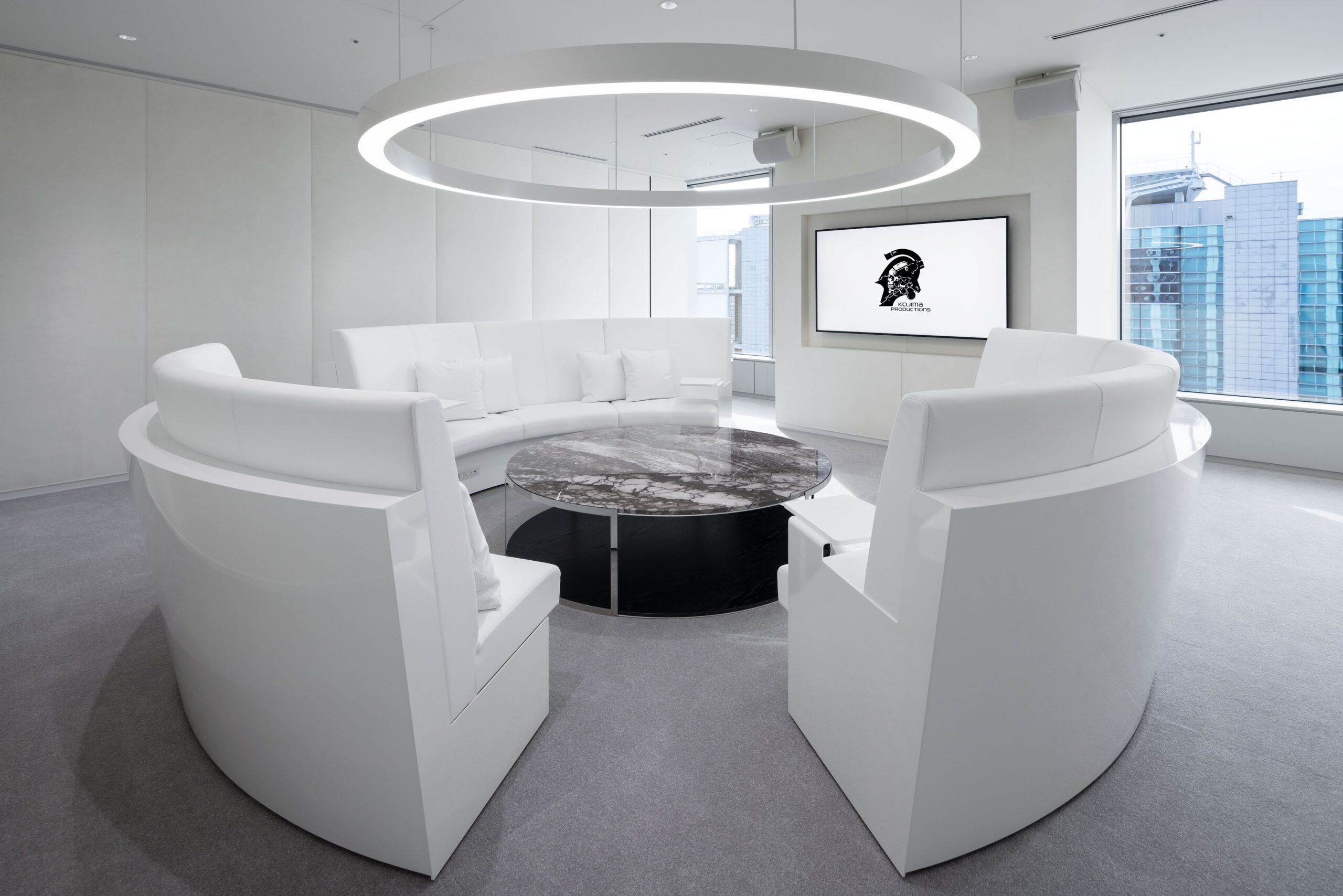
From there we headed out into a long black hallway reminiscent of a movie theatre, thanks to its large cinematic posters of Death Stranding (I was informed that the posters will be updated with new images once DS2 is out) adorned on the walls, as well as large theatre curtains draped around them. We then made a turn down another shorter hallway with various small personal photos of Hideo with his friends, many familiar faces in the entertainment industry, and beyond. This led into a studio area. As soon as I walked through into the space, i noticed two trophy cabinets, it was quite something to see some of the trophies that Kojima has racked up over the course of his career so far. BAFTAs, Dice Awards, various certificates for breaking Guinness world records, and more were all on display. When it comes to the Guinness world records, two examples Kojima had received for were being the most followed game director on Twitter and Instagram. There was even an older certificate regarding Metal Gear Solid Two: Sons Of Liberty for being the biggest selling stealth game on the Playstation 2. After examining all the different trophies I was taken further into the studio area which is home to various rooms related to recording visuals and audio. Even though it was the middle of the working day, this area felt relatively quiet, Mao explained the reason behind this is that employees tend to have blocked out sessions for when working on visuals and audio in this area of the office.
The first room we ventured into was the recording booth where actors and talent can record their voices/lines, musical instruments and any other sounds that add to what Kojima Productions are working on. Hideo Kojima has also used the room to record the audio for his Spotify podcast series, Brain Structure. The room was decked out with various vocal mics, screens, and sound equipment. Behind this room and through a black mirror was its control room, sadly as Kojima Productions staff were busy during a session, I wasn’t able to step into the control room. But It’s fitted with a digital mixing console, large screen and more, all which is used to record the audio in the booth, but the room also doubles up as a larger scale post-production work space. In this section of the office also sat a spacious meeting room for Kojima Productions employees and third parties to have meetings. Sony’s HQ is only a few steps away from the Shinagawa Season Terrace, so one could only assume this would be an ideal area for business meetings with numerous organisations.
Elsewhere in the studio area, there was a dedicated green screen room used for shooting videos, Mao explained the space may be used for internal or external videos such as interviews for example. Adjacent to this side of the studio area were two ‘artist rooms’, private spaces that talent can use for makeup, a wardrobe change, or simply get some rest before heading into a room to work on something. Undoubtedly I found the most impressive room of this sector to be the ‘Scan room’. Another bright lit white space with a circular wall of Canon cameras, sixty-five of them to be precise, in the center of the room. Within this location the Kojima Productions team can scan an individual at a 360 degree angle, enabling them to create entire 3D models for their video games. What I personally admire about Kojima Productions is how they put in one-hundred-percent effort no matter how small of a task they are working on. In Death Stranding there is a small easter egg where when it’s your birthday (which you put in at the start), your character will be delivered a birthday cake as a celebration. A lot of video game companies may just render a cake within the game but not Kojima Productions, they went the extra mile and got a cake baked in real life and they used the ‘Scan room’ to add it into the game.
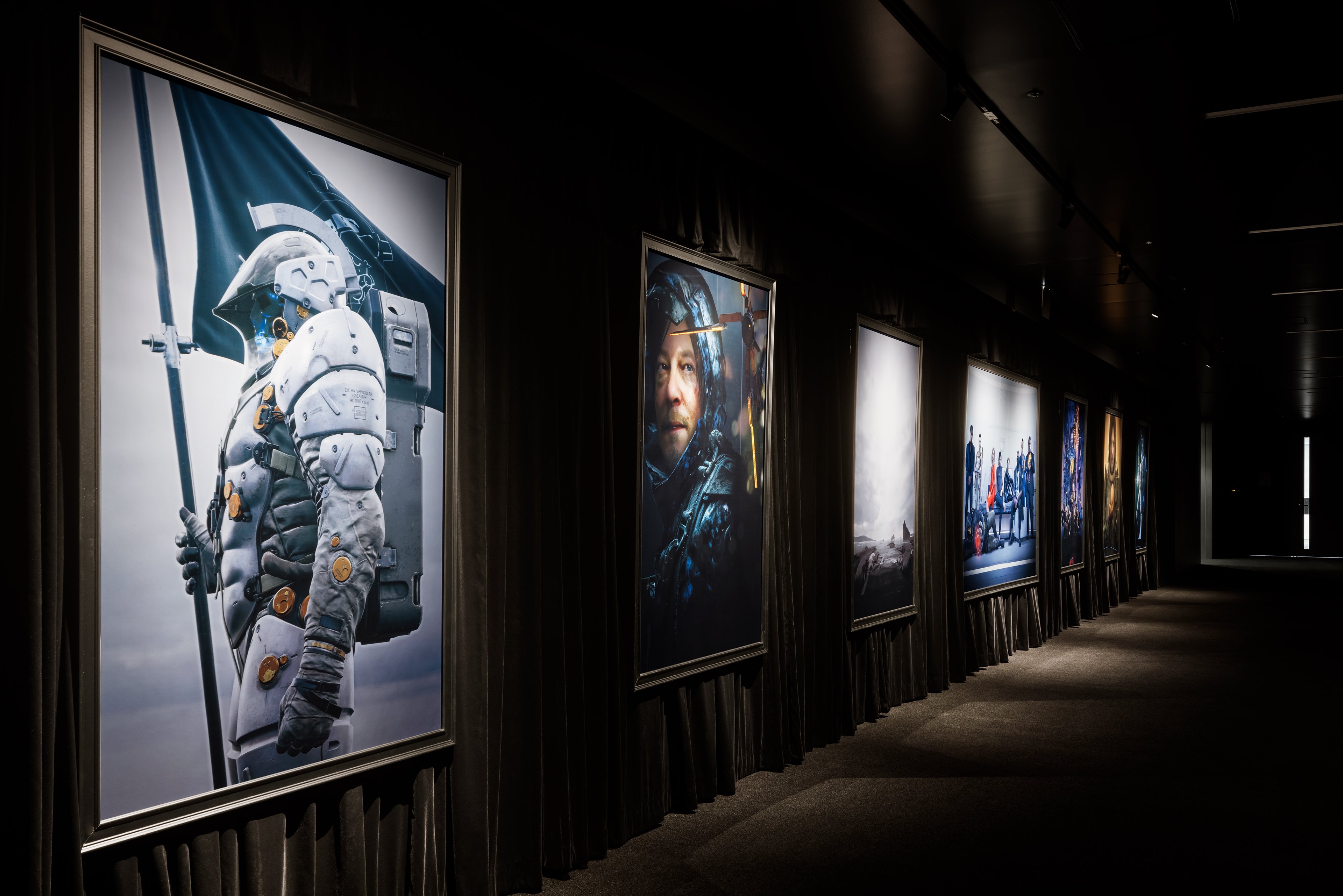
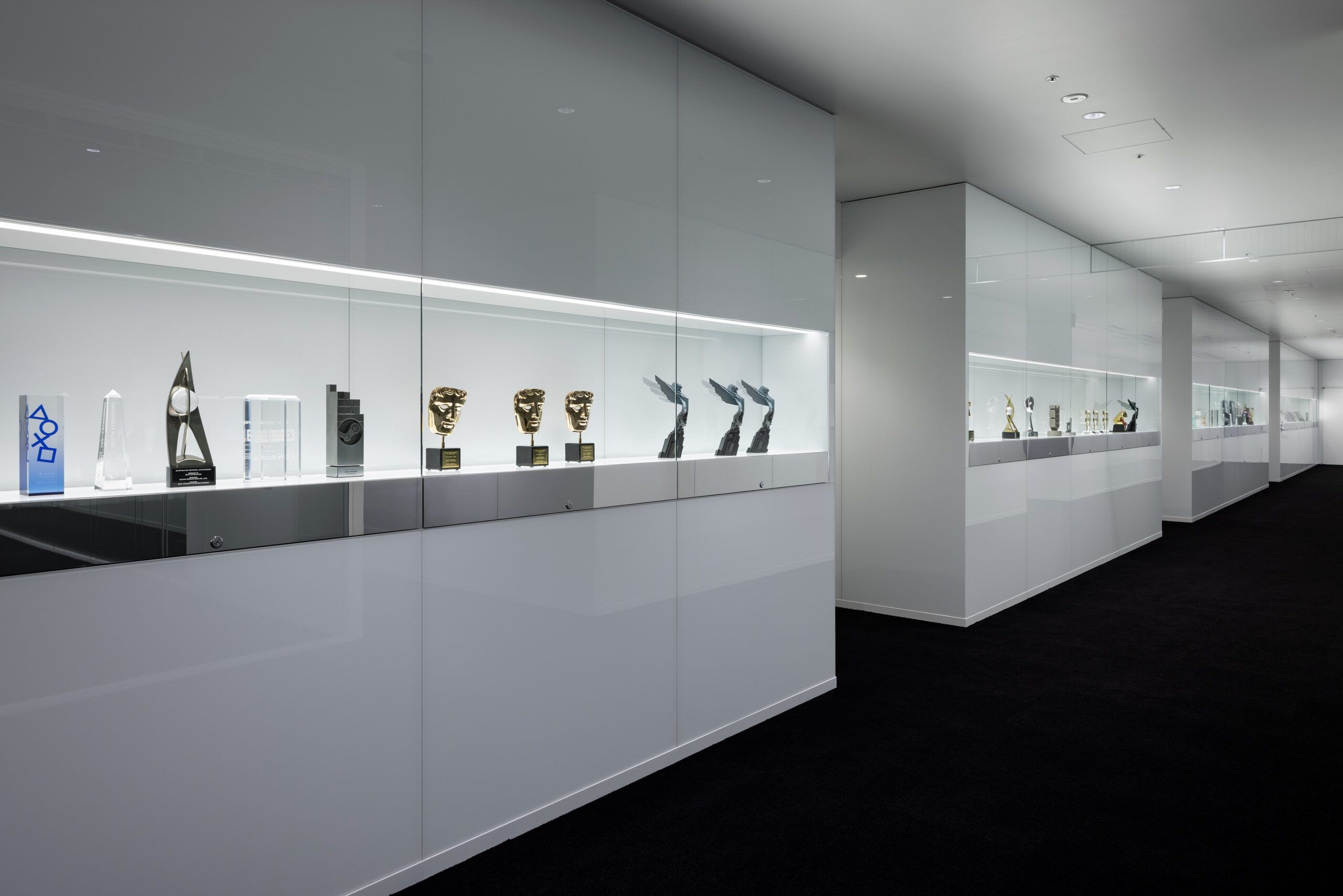
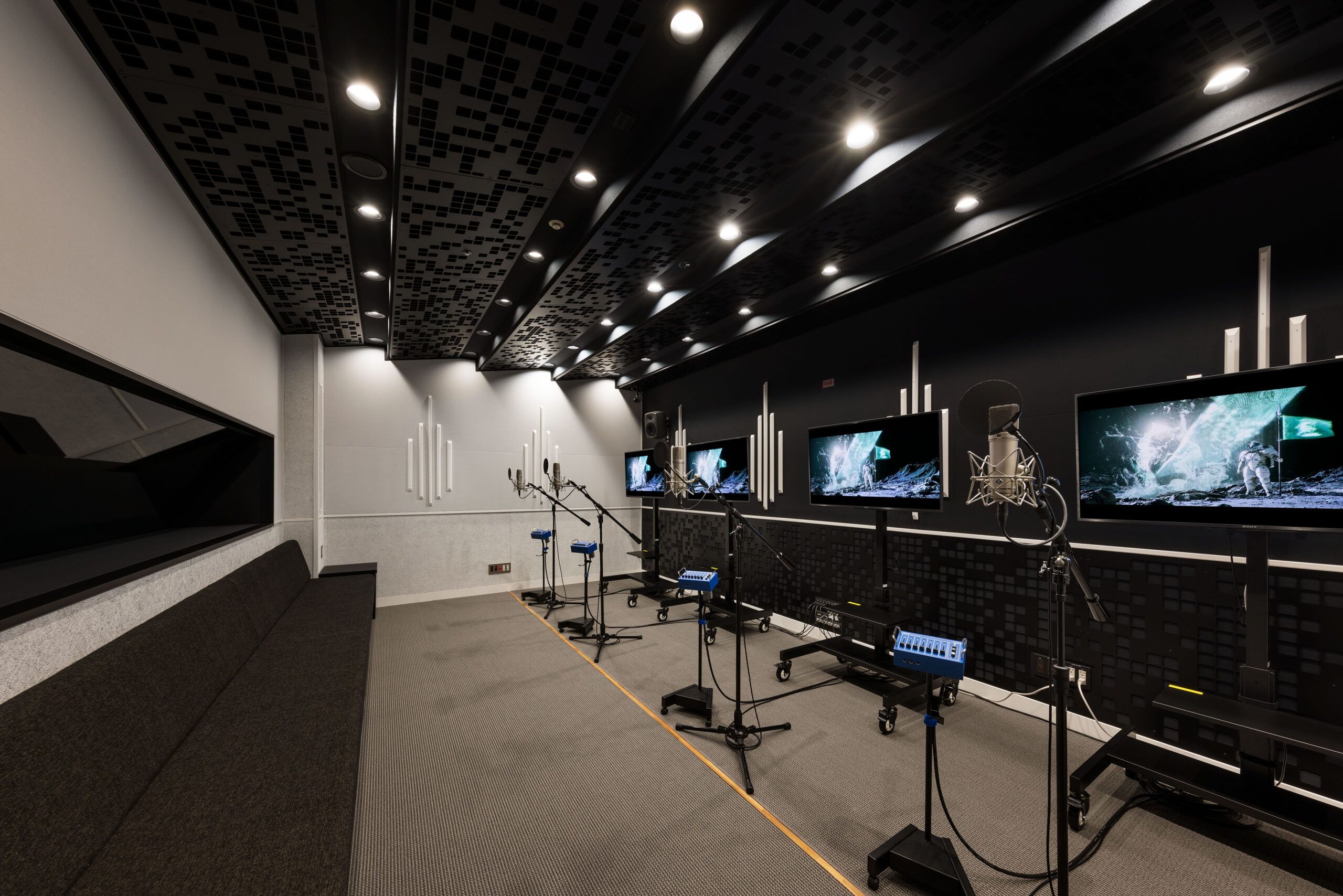
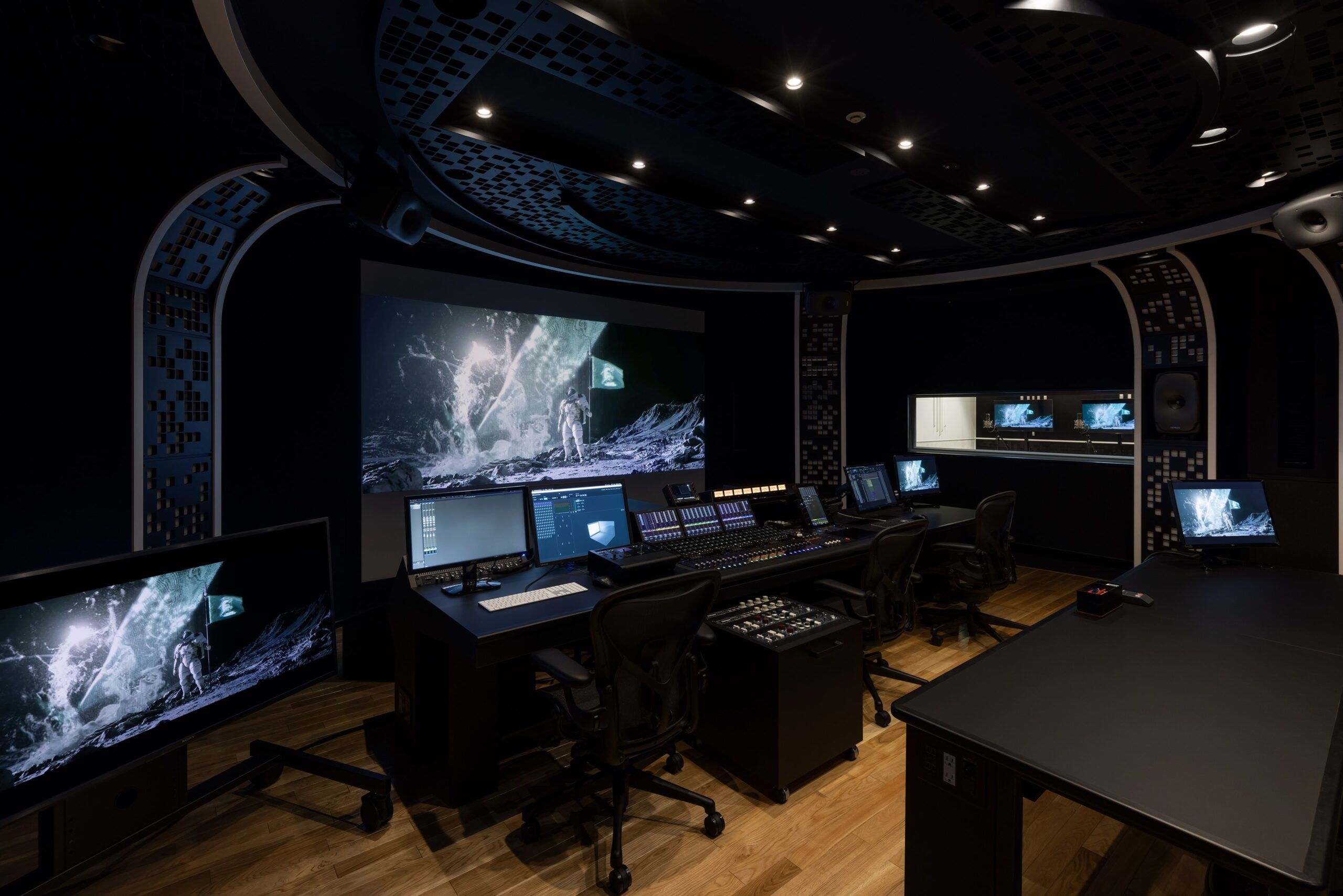
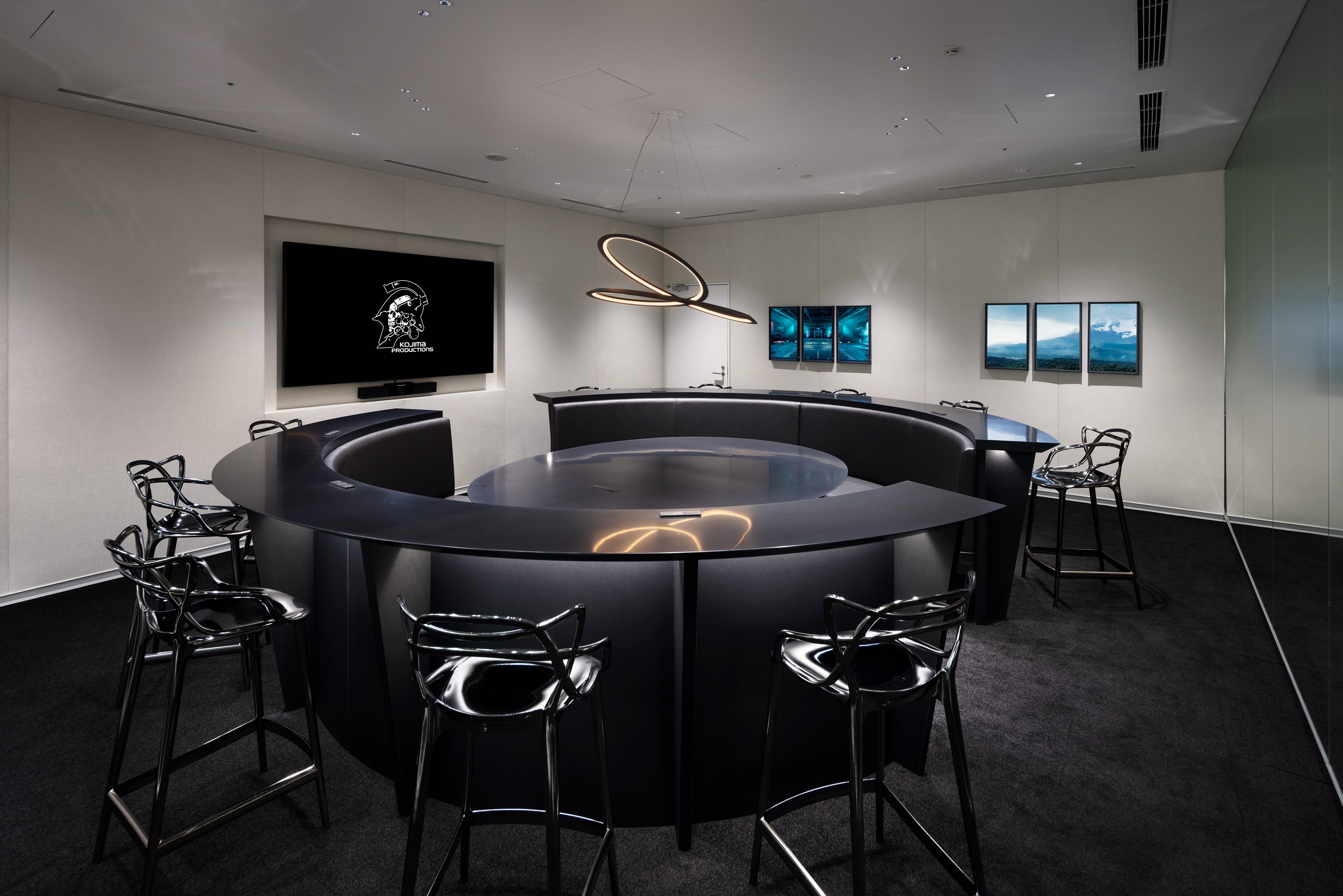
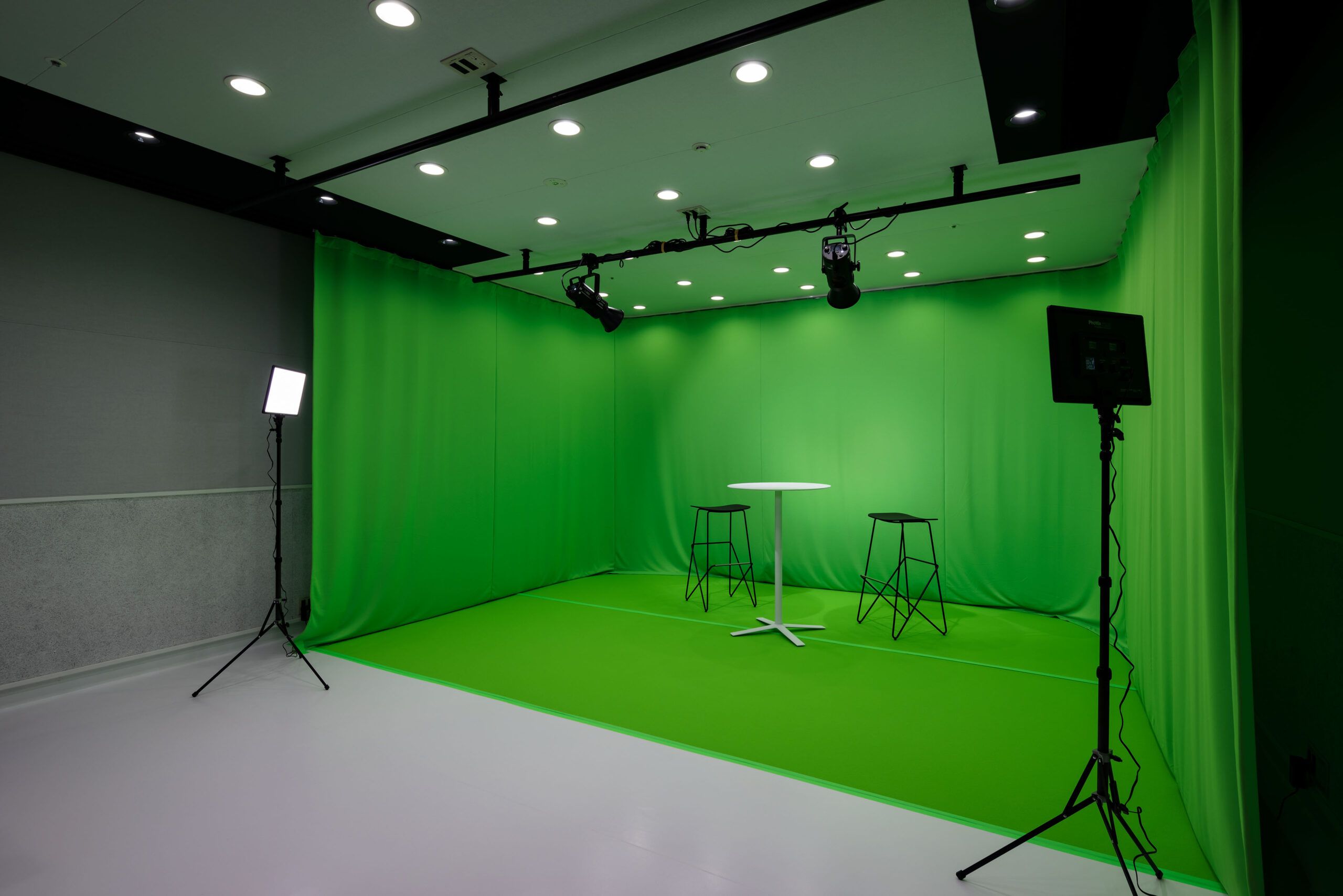
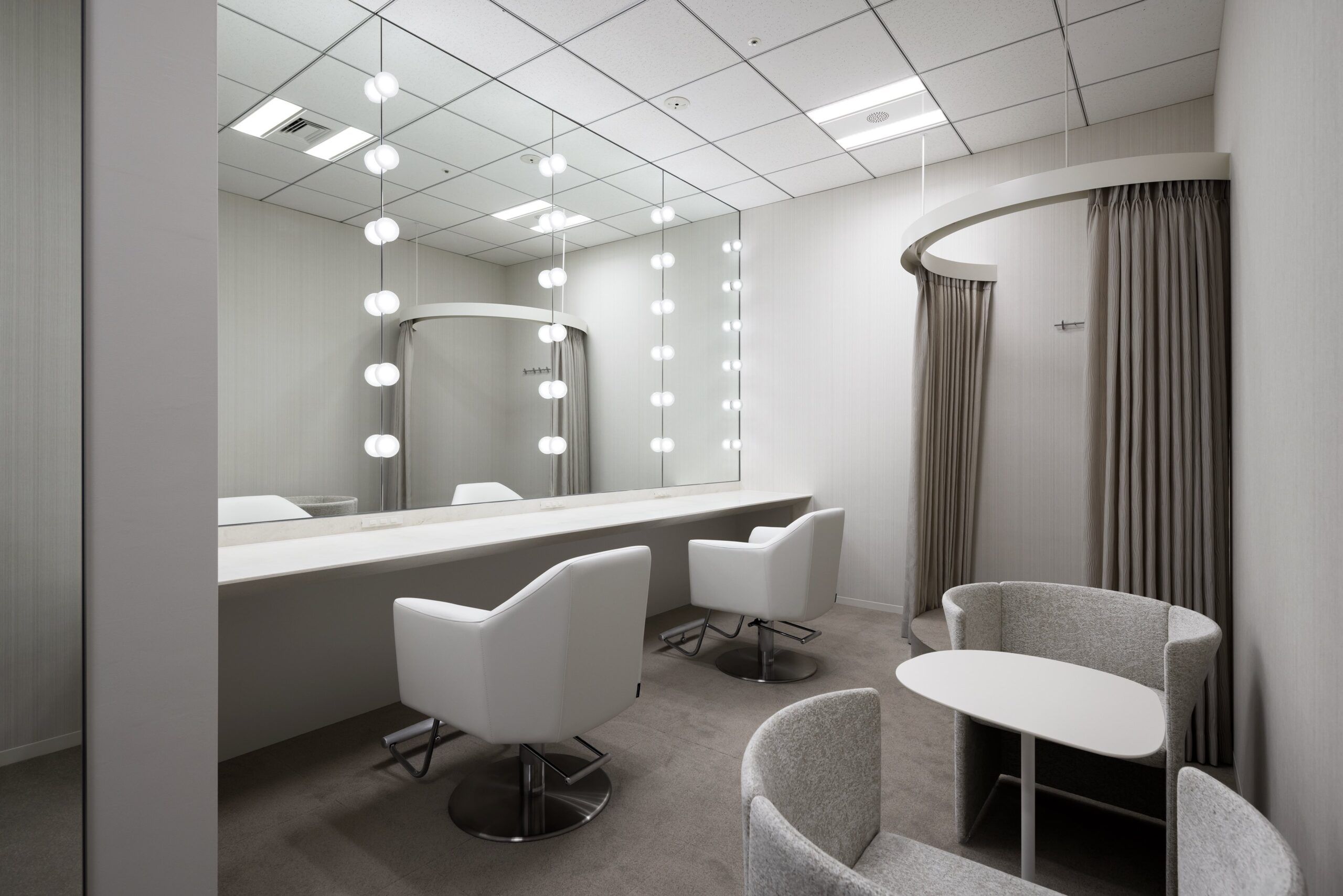
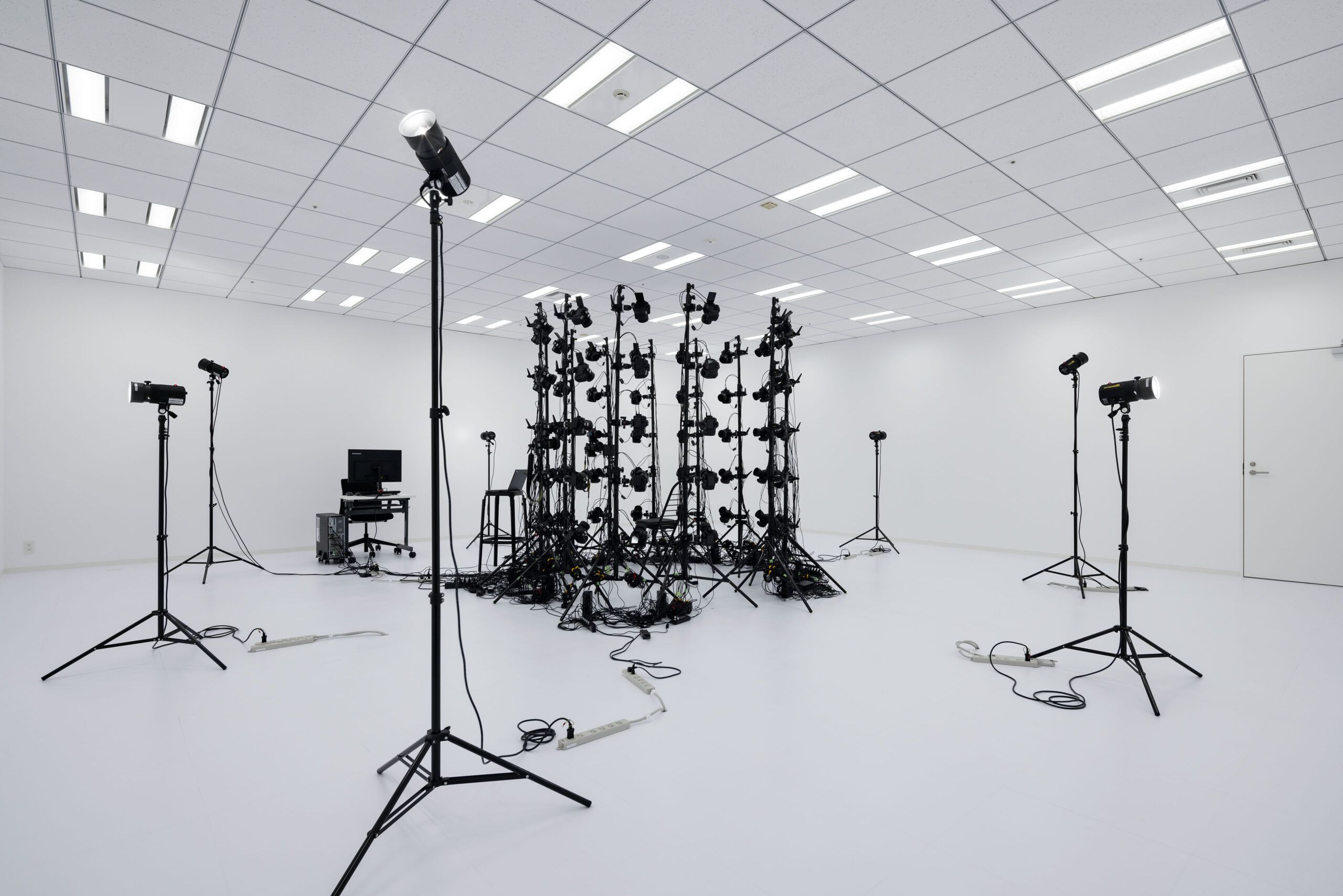
Our final sector of the office to explore was the Kojima Productions cafeteria. The sprawling space was built with refreshment and communication in mind, it has roughly 150 seats for employees to enjoy their lunch or take a break. There’s also an incredible view of Minato-Ku skyscrapers from the large windows in the cafeteria, you can also make out Tokyo Tower in the distance. It’s a space of two halves, the space closer to the windows has more of a rustic feel but then the other half has more of an atmosphere ripped straight out of a science fiction flick thanks to its bright and minimalistic aesthetic. As I walked through the cafeteria I noticed a lengthy black wall which hid two double doors in plain sight. This was the entrance into Kojima Productions’s main workspace. Although I couldn’t go any further, curiously along the lengthy black wall were various scribblings, as I got closer I noticed it was a lovely personal touch to the room. The wall was covered with an abundance of messages, drawings and signatures from the many special guests that have visited Kojima Productions over the years. Noticeably, I clocked messages from the likes of Scotland’s synth-pop group CHVRCHES, French songwriter Woodkid, and renowned Mexican film Director Guillermo del toro, to name a few.
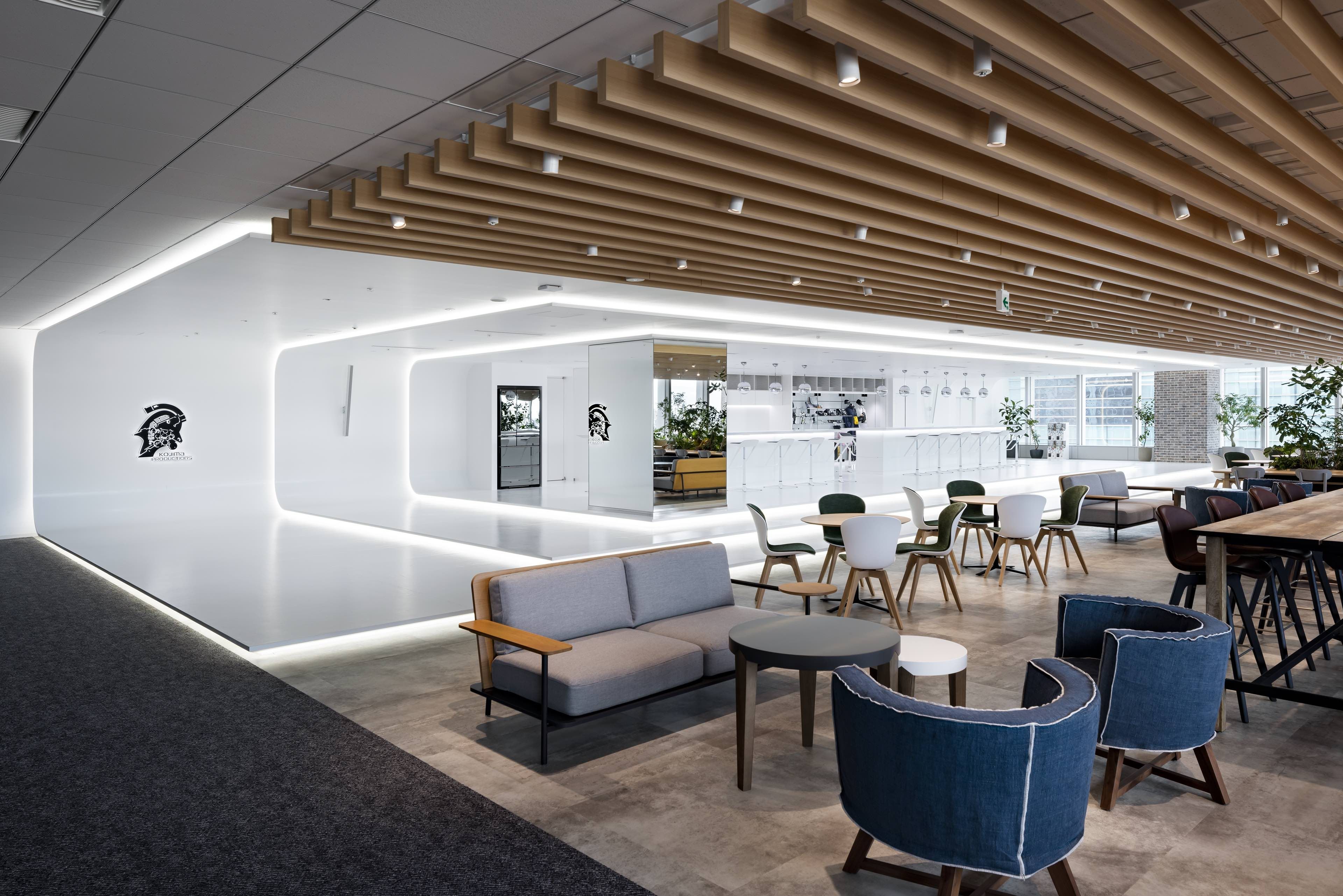

As my tour came to an end, I left thinking about how the video game industry is notorious for putting a huge amount of pressure on their staff, especially when they have to meet incredibly tight deadlines during a period of time before a release called ‘crunch time’. Yet from my first impressions everything I saw during my tour of Kojima Productions would suggest that as a company they look after their staff extremely well. There are smaller perks like being able to look after your mental and physical health by taking part in weekly exercise classes in a gym room within the office, you can partake in regularly held cinema events where the whole team will sit down and watch an inspiring film, there is a space for staff to book relaxing massages in the office, or you can simply enjoy free drinks from the Death Stranding themed vending machine in the cafeteria. Ultimately, the main driving factor behind why the staff want to work for Kojima Productions is that Hideo Kojima and his team have cultivated a positive work culture where you’re able to work on and contribute to his boundary pushing video game experiences. As mentioned earlier in the article, over the last eight years Kojima Productions has undergone stratospheric growth and we can’t wait to see where Kojima and his team go next.
Keep up to date with Hideo Kojima by clicking here and with Kojima Productions by clicking here.
Words Cameron Poole
Photography Kojima Productions

